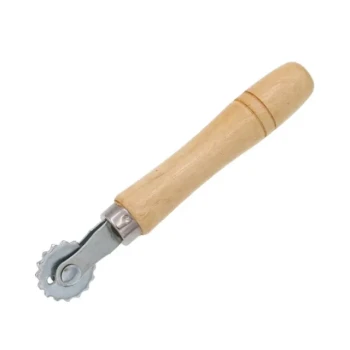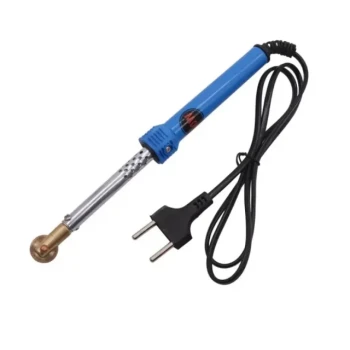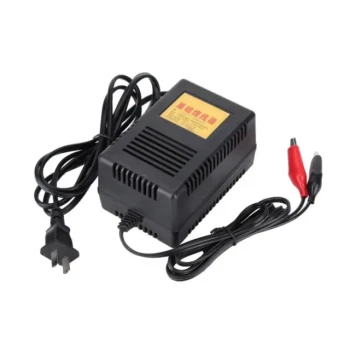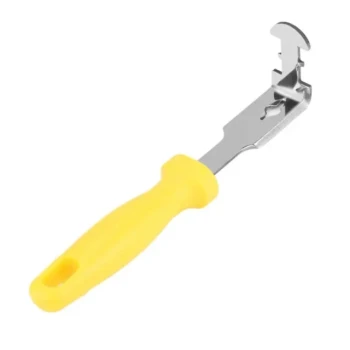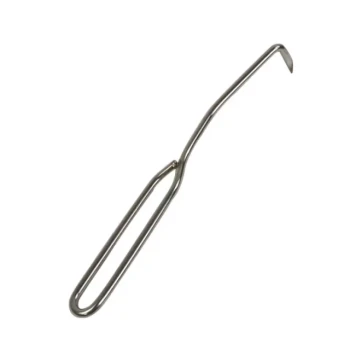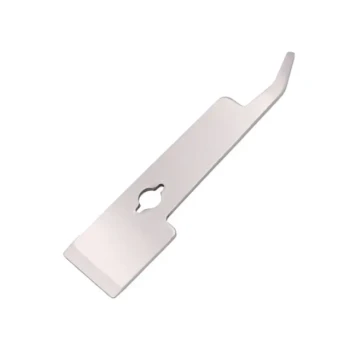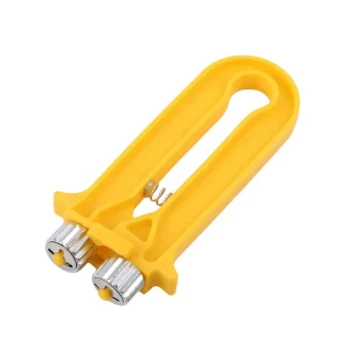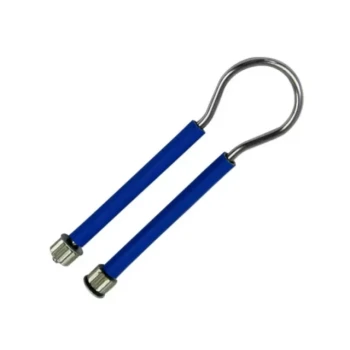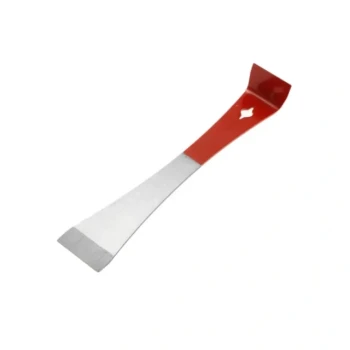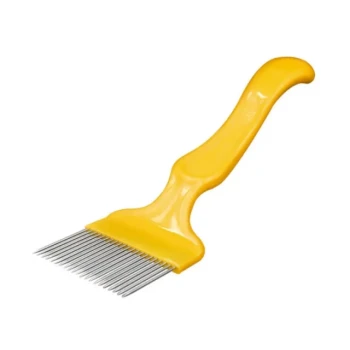In short, a drone trap frame is a specialized tool used in beekeeping to trick Varroa mites into a contained, removable area. Beekeepers encourage the colony to build drone brood on this specific frame, and once the brood cells are capped—trapping the mites inside—the entire frame is removed and frozen to kill both the drone pupae and the infesting mites.
This technique is a non-chemical component of an Integrated Pest Management (IPM) plan. It leverages the Varroa mite's natural reproductive preference for drone brood to reduce the mite population, but it is a method that demands precise timing and carries significant risk if executed improperly.
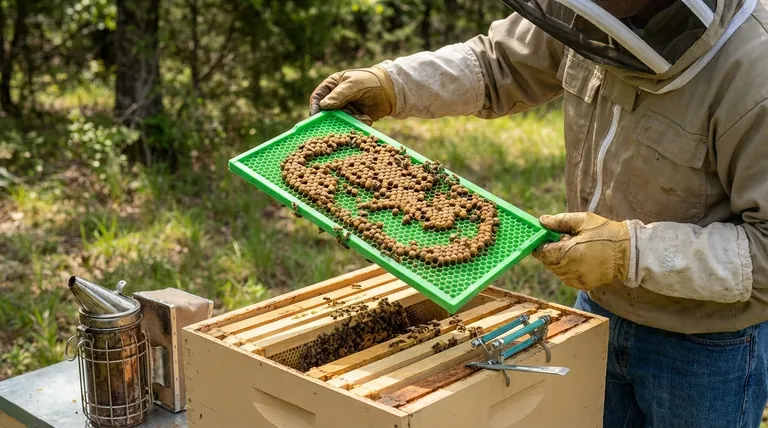
The Core Principle: Exploiting the Varroa Life Cycle
To use this method effectively, you must first understand the biological interaction between Varroa mites and honey bees. The entire strategy hinges on the mite's predictable behavior.
Why Varroa Mites Prefer Drones
Varroa mites are not just randomly infesting brood; they have a strong, instinctual preference for drone brood over worker brood. The reason is simple: a longer development cycle.
A drone pupa is capped for approximately 15 days, compared to only 12 days for a worker pupa. This extra three-day period allows a single mother mite to produce more viable, mated offspring within the cell, dramatically accelerating the mite population's growth.
How a "Trap" Frame Works
A drone trap frame, also known as drone brood removal, is designed to concentrate this preferred drone brood into one easily managed location. These frames are often bright green plastic with pre-formed, drone-sized cells to encourage the queen to lay unfertilized (drone) eggs on them.
Alternatively, a beekeeper can use a standard wooden frame with a strip of drone-sized foundation or even an empty frame, which bees will often fill with natural drone comb during a nectar flow. The goal is to create a "mite magnet" within the hive.
The Step-by-Step Process
- Placement: In the spring, when the colony is expanding and naturally wants to raise drones, place the trap frame in the brood box, typically in position 2 or 9 (second from the outside).
- Laying: The queen will find the larger cells and lay drone eggs. The nurse bees will then feed the larvae.
- Capping: Once the drone larvae are mature, the workers will cap the cells with wax. This is the critical moment when the reproductive Varroa mites are sealed inside with their food source.
- Removal: You must remove the frame after the majority of the drone brood is capped but before any new drones begin to emerge. This window is unforgiving.
- Destruction: Freeze the entire frame for at least 48 hours. This kills the drone pupae and, more importantly, all the mites and their offspring trapped within the cells.
- Cleaning & Reuse: After freezing, you can scratch open the cappings and place the frame back in the hive. The bees will clean out the dead brood and prepare the frame for the next cycle.
Understanding the Trade-offs and Limitations
While effective as a supplementary tool, drone brood trapping is not a silver bullet. Its success depends entirely on the beekeeper's diligence, and it comes with significant costs to the colony.
The High Cost in Colony Resources
Raising thousands of drones requires a tremendous investment of nectar, pollen, and bee energy. By systematically destroying this brood, you are forcing the colony to constantly expend resources on bees that will never contribute to the hive's future.
The Risk of Creating a "Mite Bomb"
This is the single greatest risk of this technique. If you forget, are late, or are otherwise unable to remove the frame before the new drones emerge, you have not set a trap; you have built a mite incubator. The massive number of Varroa mites you helped cultivate will emerge and spread throughout the colony, making your infestation drastically worse.
It Is Not a Stand-Alone Solution
Drone brood trapping can remove a significant number of mites, but it will never remove all of them. Many mites will remain in worker brood and on adult bees (the phoretic stage). This method only suppresses mite population growth; it does not eliminate it. It must be used in conjunction with regular mite monitoring (like an alcohol wash) and other treatment methods.
Limited by Season
This technique is only viable during the spring and early summer when the colony is naturally inclined to produce drones. It is ineffective in the late summer and fall when drone production ceases.
Making the Right Choice for Your Apiary
Deciding whether to incorporate drone brood trapping depends on your beekeeping philosophy, your goals, and your level of commitment.
- If your primary focus is maximum mite control with high certainty: Rely on proven, legally approved miticides during key treatment windows and use drone trapping as an optional supplement if you have the time.
- If your primary focus is an organic or treatment-free approach: Drone brood trapping is a crucial tool in your arsenal, but it must be executed flawlessly and combined with other methods like screened bottom boards and genetic selection for hygienic bee stock.
- If your primary focus is minimizing hive disruption: This is a high-intervention technique. Less disruptive methods may be preferable, though they may also be less effective at mite reduction.
Ultimately, drone brood trapping is a powerful technique for actively managing Varroa, but it functions less like a passive trap and more like a high-stakes surgical procedure that requires precision, knowledge, and vigilance.
Summary Table:
| Aspect | Key Detail |
|---|---|
| Primary Function | Lures Varroa mites into a removable frame of drone brood for destruction. |
| Core Principle | Exploits the mite's strong preference for drone brood over worker brood. |
| Best Season | Spring and early summer, during natural drone production. |
| Key Advantage | Non-chemical component of an Integrated Pest Management (IPM) plan. |
| Major Risk | Creating a "mite bomb" if frame is not removed before drones emerge. |
| Effectiveness | Suppresses mite population growth; not a stand-alone solution. |
Optimize Your Apiary's Pest Management Strategy
Effectively managing Varroa mites is critical for the health of your colonies and the success of your operation. Drone trap frames are a powerful tool, but they require precision and high-quality equipment to be effective without risking your investment.
HONESTBEE supplies commercial apiaries and beekeeping equipment distributors with the durable, reliable supplies needed to implement advanced IPM techniques like drone brood trapping. From specialized frames to essential hive tools, our wholesale-focused operations ensure you get the professional-grade equipment your business depends on.
Let's discuss how our products can support your specific pest management goals.
Contact our team today for wholesale pricing and to find the right solutions for your apiary.
Visual Guide
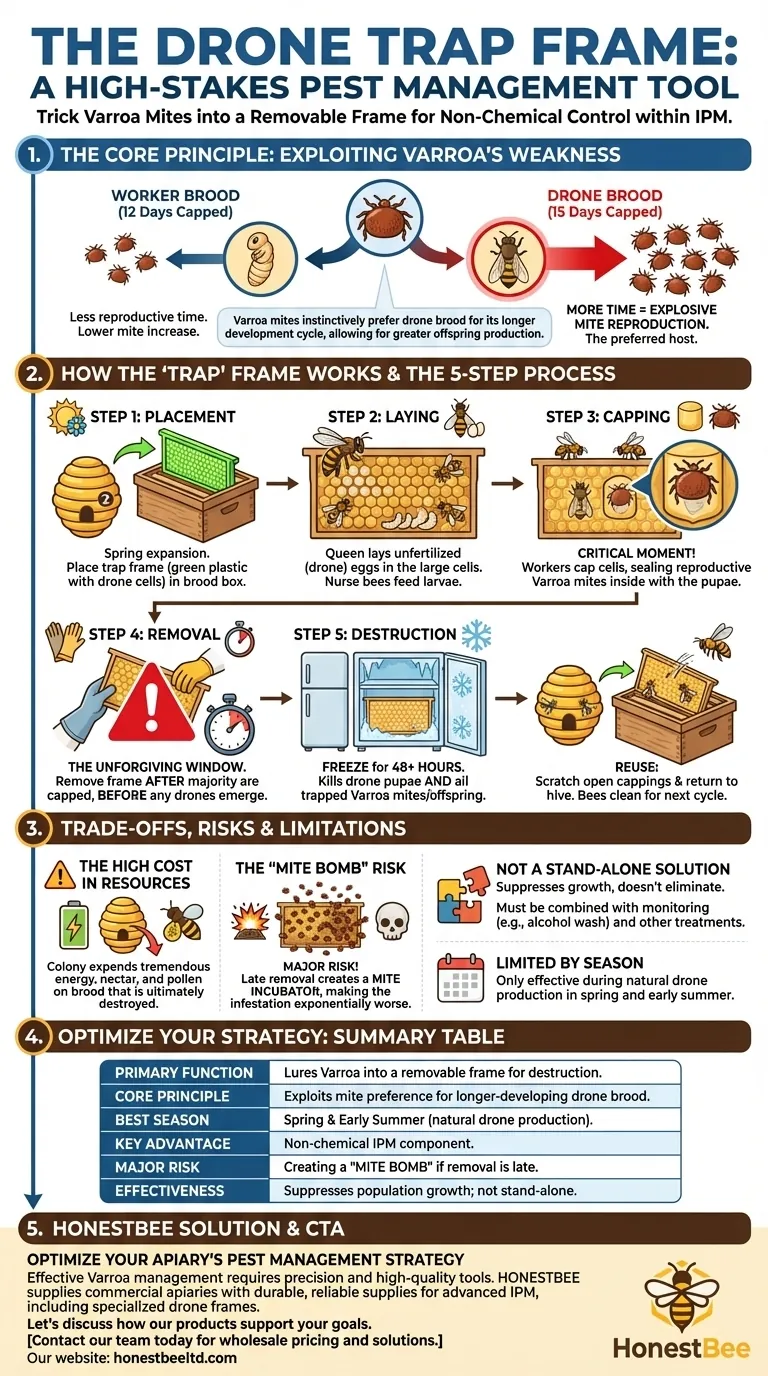
Related Products
- Professional 3-Bar Frame Grip with Integrated Hive Tool
- Multi-Function Plier-Style Frame Grip Hive Tool
- Professional Stainless Steel Pry-Bar Hive Tool
- Professional Dual-End Stainless Steel Hive Tool for Beekeeping
- HONESTBEE Professional Multi-Functional Hive Tool with Ergonomic Wood Handle
People Also Ask
- What does every bee keeper need? Your Essential Guide to Starting Strong
- What products pair well with Frame Grips for beekeeping? Build Your Complete Hive Inspection Toolkit
- What is required to be a beekeeper? Essential Equipment, Knowledge & Mindset
- What are Frame Grips used for in beekeeping? Boost Your Hive Inspection Efficiency & Bee Safety
- What are the benefits of using Frame Grips in beekeeping? Boost Efficiency & Protect Your Hive





